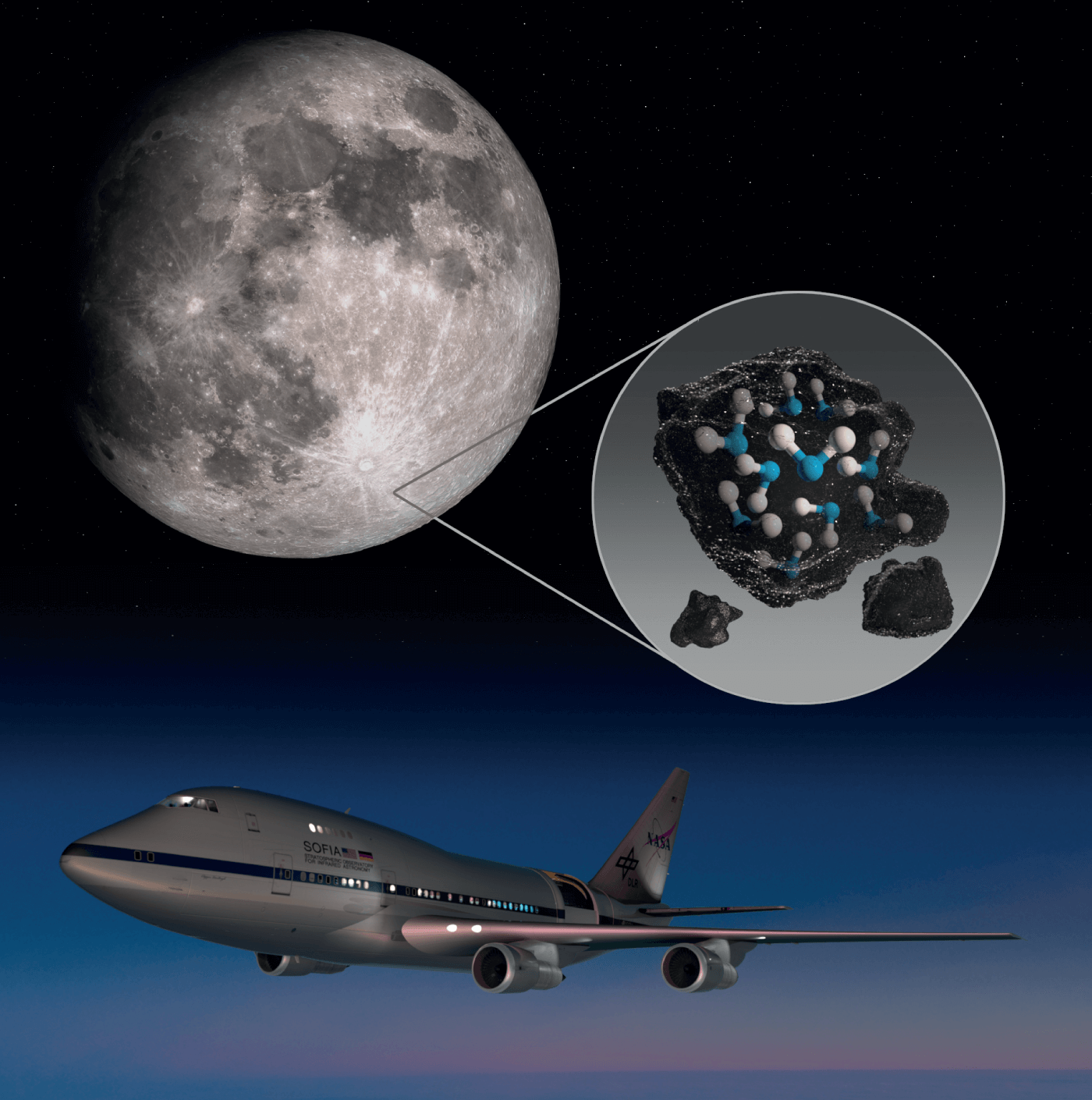True, we were pretty certain there was water on the Moon already – but previous observations couldn’t distinguish H2O from its close chemical relative, hydroxyl (OH). Now, thanks to some savvy spectroscopy at the hands of NASA’s Stratospheric Observatory for Infrared Astronomy (SOFIA), researchers have been able to confirm the presence of water on the sunlit surface of the moon for the first time (1).

The discovery took place in the Clavius Crater, one of the Moon’s largest craters. Previously, it was assumed that the life-sustaining liquid was confined to colder, shadier areas – but this finding hints at water being distributed across larger areas of the lunar surface.
A clever application of existing technology made this discovery possible. “Besides SOFIA, there are no spacecraft with instruments that can make measurements of the Moon at 6 microns,” says Casey Honniball, lead author. This is important because a spectral signature at 6 μm is specific to water and is not shared by any other hydroxyl compounds.
“That’s why SOFIA is unique,” says Honniball. “It flies above most of the water vapor that blocks 6 μm light from ground-based telescopes and has an instrument that can look at the Moon at this wavelength.” The modified Boeing 747SP jetliner has a 106-inch diameter telescope that is able to reach above most of the water vapor in the Earth’s atmosphere. The onboard FORCAST (Faint Object infrared Camera for the SOFIA Telescope) instrument was then able to pick up the unique spectral signature of water and estimate an abundance of around 100 to 400 µg/g.
It may not be much, but if – as the researchers suggest – the water is trapped in glassy materials or voids between grains sheltered from the harsh lunar environment, it could serve as a potential resource for future space exploration programs. In fact, there are already plans in place to follow up this research with further flights to gather more information about how the water is produced, stored, and moved across the Moon.
References
- CI Honniball et al., Nat Astron (2020). DOI: 10.1038/s41550-020-01222-x




